Introduction
When your website suddenly drops in search results, it triggers immediate concern—and rightfully so. Understanding the technical factors behind declining search performance is essential for implementing effective ranking improvement strategies. This comprehensive SEO analysis will dissect the most common causes of ranking drops and provide actionable solutions that address the root technical issues affecting your visibility.
Before we dive into the technical complexities, let's establish something crucial: most ranking declines aren't random. They're systematic responses to specific changes—either on your site, in search algorithms, or within your competitive landscape.
Core Algorithm Updates: The Primary Catalyst
Understanding Google's Evolution
Search engines continuously refine their algorithms to deliver superior user experiences. When major updates roll out—such as Core Updates, Helpful Content Updates, or Page Experience changes—websites that don't align with new quality standards experience ranking volatility.
Key Algorithm Impact Areas:
- Content Quality Assessment: Algorithms now evaluate expertise, authoritativeness, and trustworthiness (E-E-A-T) more rigorously than ever
- User Experience Signals: Core Web Vitals and interaction metrics directly influence search performance
- Spam Detection: Sophisticated AI identifies manipulative SEO tactics with unprecedented accuracy
- Relevance Matching: Semantic search capabilities demand content that truly satisfies user intent
Solution Strategy: Conduct immediate SEO analysis following any confirmed algorithm update. Compare your content against top-ranking competitors to identify quality gaps. Focus on genuine value creation rather than optimization tricks.
Technical SEO Deterioration
Infrastructure Issues That Kill Rankings
Technical problems create friction between your website and search engine crawlers, resulting in indexing failures and ranking suppression.
Critical Technical Factors:
Site Speed Degradation
- Unoptimized images consuming excessive bandwidth
- Bloated JavaScript libraries slowing page rendering
- Server response times exceeding 200ms threshold
- Lack of browser caching and compression
Mobile Usability Problems
- Non-responsive design elements breaking on smaller screens
- Interstitials blocking content access
- Touch elements positioned too closely together
- Font sizes too small for comfortable mobile reading
Crawl Budget Waste
- Duplicate content variations consuming crawler resources
- Infinite scroll implementations without proper pagination
- Broken internal link structures creating dead ends
- Robots.txt misconfiguration blocking important pages
Security Vulnerabilities
- Missing HTTPS encryption
- Malware infections or hacking compromises
- Mixed content warnings degrading user trust
Implementation Roadmap:
Run comprehensive technical audits using tools like Google Search Console, Screaming Frog, or PageSpeed Insights. Prioritize fixes based on severity—security first, then crawlability, followed by performance optimization. Monitor Core Web Vitals continuously through real user monitoring.
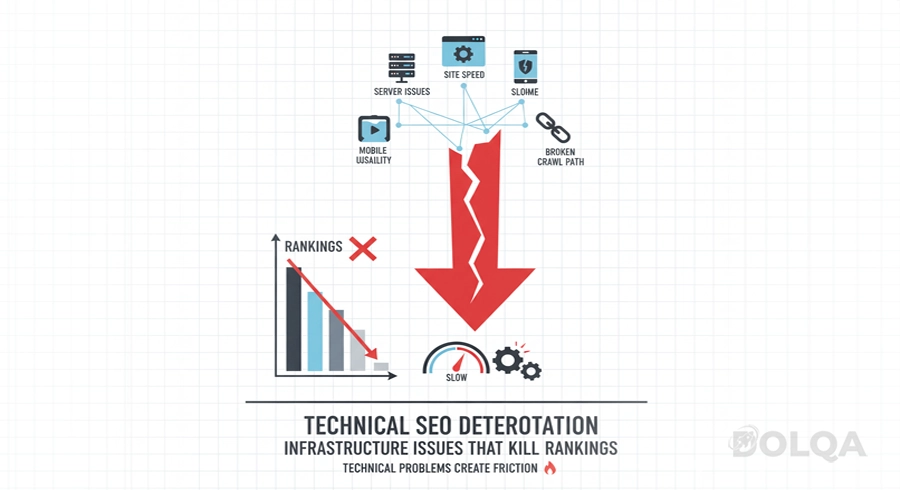
Content Quality Regression
When Your Content Loses Competitive Edge
Picture yourself as a search engine evaluating two similar articles—which deserves the top position? The answer lies in demonstrable quality signals that your content might be missing.
Content that once ranked well can deteriorate in relative quality as competitors publish more comprehensive, updated, or authoritative resources.
Content Quality Indicators:
- Freshness and Accuracy: Outdated statistics, broken references, or obsolete recommendations signal neglect
- Depth of Coverage: Superficial treatment of complex topics fails to satisfy user search intent
- Originality Deficit: Regurgitated information without unique insights or perspectives
- Poor Readability: Dense text blocks, unclear structure, or inadequate formatting
- Missing Multimedia: Absence of explanatory images, videos, or interactive elements
Content Renovation Process:
- Identify underperforming pages through search performance data
- Analyze top-ranking competitor content for depth and structure
- Update factual information and add current year references
- Expand thin content with comprehensive sections addressing related queries
- Enhance formatting with headers, lists, and visual elements
- Add expert insights, case studies, or original research data
Backlink Profile Deterioration
The Hidden Erosion of Authority
Your website's authority depends heavily on the quality and quantity of inbound links. When valuable backlinks disappear—through site migrations, content removals, or domain expirations—your ranking foundation weakens.
Backlink Loss Scenarios:
- Referring domains going offline or removing content
- Link schemes being devalued through algorithmic penalties
- Competitor acquisition of previously linking sites
- Natural attrition as old content becomes obsolete
Toxic Link Accumulation:
Paradoxically, gaining low-quality or spammy backlinks can also trigger website ranking issues. Negative SEO attacks or poor historical link-building practices create toxic profiles that search engines penalize.
Backlink Recovery Strategies:
- Monitor backlink profiles weekly using Ahrefs, Moz, or SEMrush
- Reach out to sites with broken links to request restoration
- Build new high-authority links through digital PR and content marketing
- Submit disavow files for genuinely harmful spam links
- Focus on earning editorial links through exceptional content creation
User Experience Signal Deterioration
When Visitors Vote Against Your Site
Search engines increasingly rely on user interaction metrics to assess content quality. Poor engagement signals directly correlate with declining search performance.
Behavioral Metrics That Impact Rankings:
- Click-Through Rate (CTR): Low CTR from search results indicates unappealing titles or descriptions
- Dwell Time: Users quickly returning to search results suggest content dissatisfaction
- Bounce Rate: High immediate exits signal relevance mismatches
- Conversion Signals: Lack of engagement actions (scrolling, clicking, form submissions)
UX Optimization Tactics:
Craft compelling meta titles and descriptions that accurately promise what your content delivers. Ensure above-the-fold content immediately addresses the search query. Implement clear navigation and internal linking that encourages deeper exploration. Test different content formats to identify what resonates with your audience.
Competitive Landscape Shifts
When Others Simply Outperform You
Sometimes your SEO strategies haven't failed—competitors have simply implemented better ones. Aggressive content production, superior technical implementation, or stronger link acquisition by competitors can displace your rankings.
Competitive Analysis Framework:
- Benchmark your content against position 1-5 competitors
- Analyze their backlink acquisition velocity and sources
- Evaluate their technical performance metrics
- Identify content gaps they're addressing that you're missing
- Monitor their publishing frequency and topic coverage
Strategic Response:
Develop differentiated content that offers unique value propositions. Identify underserved keyword opportunities within your niche. Invest in building brand recognition that generates direct searches and click preference.
Effective Solutions: A Systematic Approach
The Ranking Improvement Protocol
Reversing ranking declines requires methodical diagnosis and targeted intervention:
Phase 1: Diagnostic Assessment
- Audit technical infrastructure comprehensively
- Analyze content quality against current top performers
- Review backlink profile health and recent changes
- Examine user engagement metrics and behavior flows
Phase 2: Prioritized Remediation
- Address critical technical errors immediately
- Update or expand underperforming cornerstone content
- Strengthen topical authority through content clustering
- Build authoritative backlinks from relevant sources
Phase 3: Monitoring and Iteration
- Track ranking recovery weekly across target keywords
- Monitor Core Web Vitals and technical health metrics
- Analyze organic traffic trends and conversion impact
- Adjust strategies based on performance data
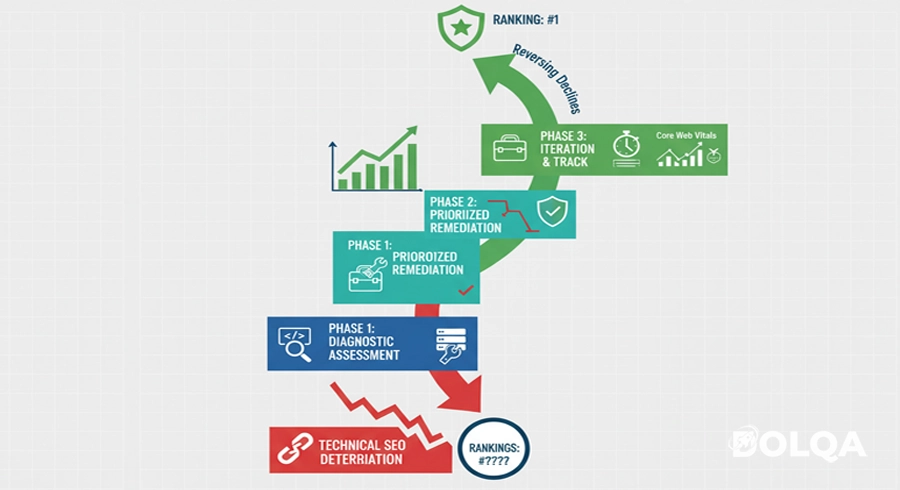
Conclusion
Website ranking issues rarely stem from single factors—they typically involve multiple interconnected causes requiring comprehensive SEO analysis. By systematically addressing technical infrastructure, content quality, backlink health, user experience, and competitive positioning, you can develop effective SEO strategies that restore and exceed previous search performance levels.
The path to ranking improvement demands both technical precision and strategic patience. Search engines reward consistent quality and genuine value creation over quick-fix optimization tactics. Begin with thorough diagnosis, prioritize high-impact fixes, and commit to ongoing optimization as an integral business process rather than a one-time project.
Your website's search visibility directly impacts business outcomes. Invest the necessary resources in professional SEO analysis and implementation—the return on that investment manifests through sustained organic traffic growth and competitive market positioning.


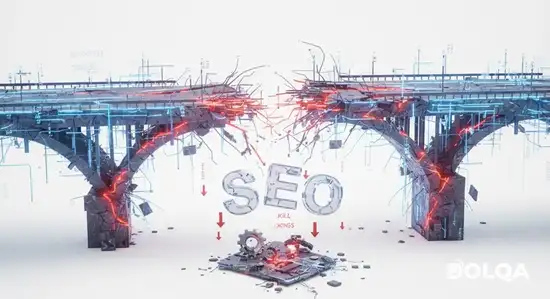

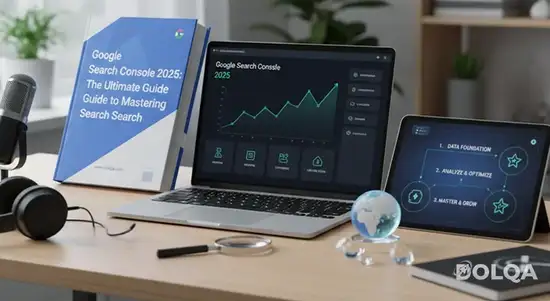

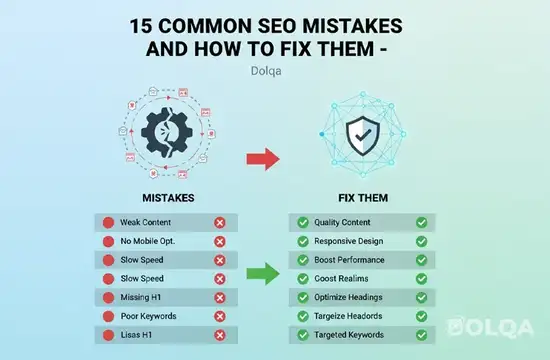
Comments (0)
Leave a Comment
No comments yet. Be the first to comment!